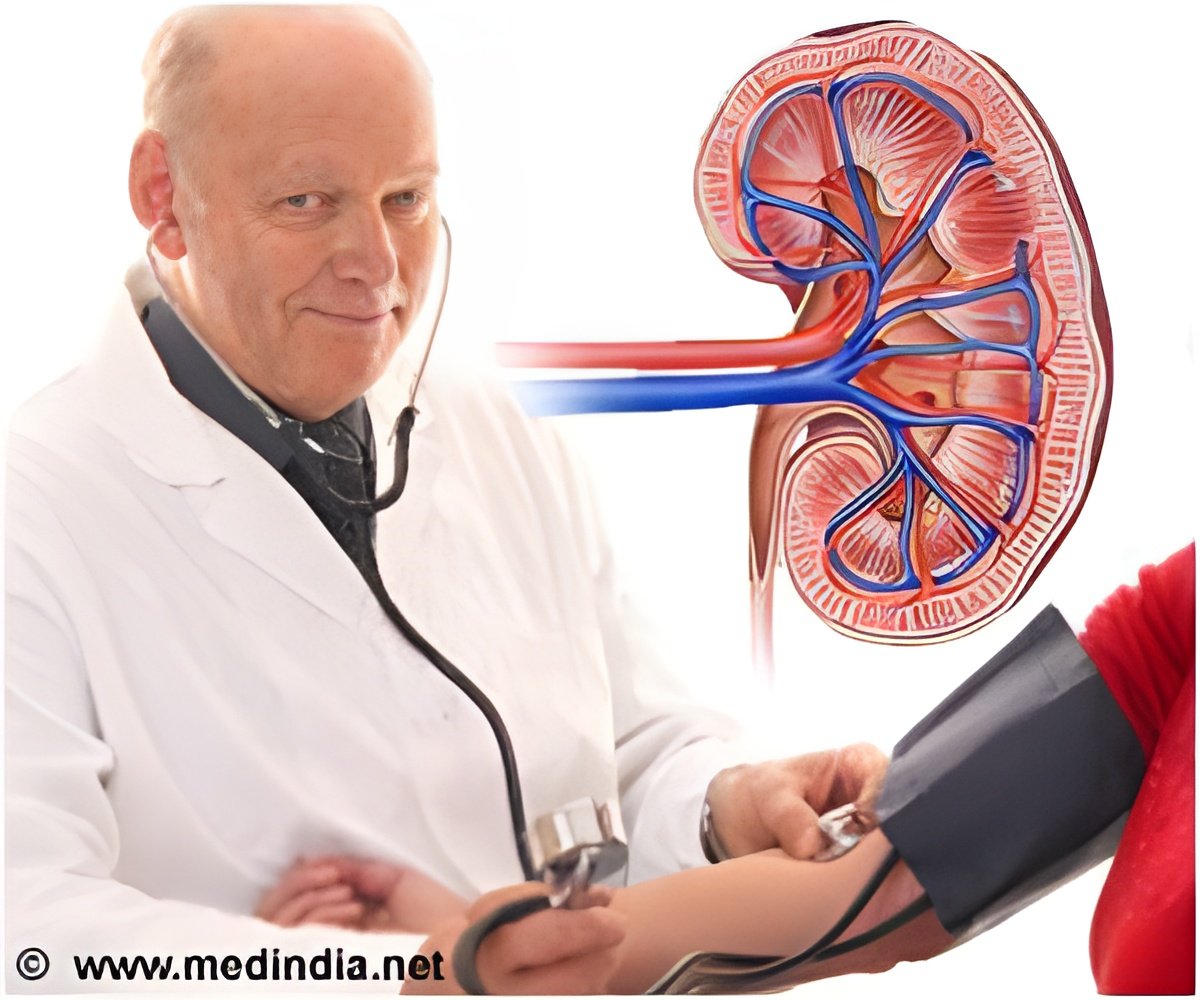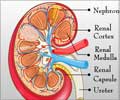In those with chronic kidney disease controlling high BP helps to prevent the onset of end-stage renal disease.

It is very difficult to control hypertension in those with CKD. In most cases, three to four medications are employed to keep BP under control in these patients.
Use of various medications to control BP has resulted in disproportionately lowering diastolic blood pressure (DBP), thus widening the pulse pressure (PP) in CKD patients. Pulse pressure is the difference between the systolic and diastolic pressures; it is the amount of pressure required to create the feeling of a pulse. Low DBP and high PP reportedly leads to cardiovascular events in patients and this has caused anxiety among doctors regarding aggressive treatments.
Very few studies have actually looked into the link between BP parameters, such as systolic blood pressure (SBP), diastolic blood pressure, and ESRD risk.
A study was modulated to assess the risk of developing ESRD in those with CKD, and its association with SBP and DBP in those who participated in the kidney early evaluation program (KEEP). An attempt was also made to assess if PP had a role in ESRD risks.
KEEP is a health program that attempts to raise awareness in those with CKD. In this study adult older than 18 yrs who either have kidney disease, diabetes or hypertension or those who have a family history of kidney disease were used as study subjects. Those studied had established stage 3 disease (glomerular filtration rate lower than 60mL/min/1.73m2) and their blood pressure readings were recorded. A sample size of 16129 was studied.
Each patient was followed from the time of screening to the development of ESRD.
It was observed in those with chronic kidney disease (especially those whose systolic values were higher than 140 mm HG) SBP was independently associated with increased risk of ESRD. Those with a DBP value of 90mm Hg were also at high risks. PP was not independently linked to ESRD risks.
The study clearly indicates that those with SBP greater than 140hg mm and DBP greater than 90hg mm belonged to the high -risk group. One third of the subjects had uncontrolled hypertension and belonged to the highest risk group. Most of them suffered from systolic hypertension.
This inference has note worthy implications as it suggests aggressive treatment for those with the value above 140 mm Hg and also eases the dilemma faced by clinicians in treating those with CKD. Some of the challenges include:
• BP level of 130/80 mm Hg is attainable only in 45% of those with CKD.
• A combination of 3-4 medications is used in treating CKD patients with high BP. The treatment strategies used remain controversial as they have plenty of side –effects.
This community- based study carried out on subjects from a screening program showcases the need for more such studies carried out on a wider scale.
Inferences:
• Increased SBP and DBP associated with ESRD risks.
• Higher PP value associated with higher ESRD
• Wider PP also indicates arterial stiffness and worse cardiac outcomes.
• Use of more than 3 anti hypertensives was associated with lowering DBP rather than SBP.
• Prevalence of increased hypertension is common in those with CKD
• New strategies must be tried to manage CKD, including those to reduce arterial thickness
• A BP goal of 140/90 Hg mm may help to protect kidneys in those with CKD.
• Strategies to control BP must focus on controlling SBP in particular.
• It was also inferred from the study that age, African-American ethnicity, history of diabetes mellitus and albuminuria were important indicators of isolated increased SBP.
Reference: Archive of Internal Medicine, Vol 172 no 1. Jan 9th 2012.
Source-Medindia
 MEDINDIA
MEDINDIA



 Email
Email










